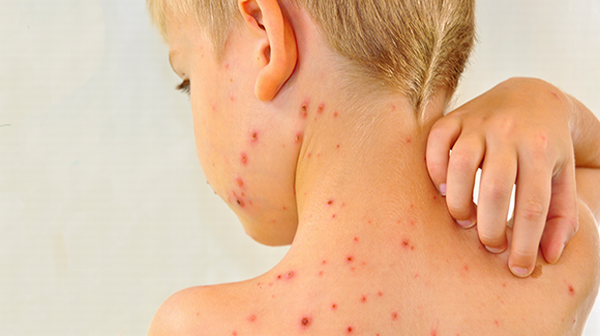What's in this article?
Measles Overview
Measles is a childhood infection caused by a virus. Once quite common, measles can now almost always be prevented with a vaccine. Signs and symptoms of measles include cough, runny nose, inflamed eyes, sore throat, fever and a red, blotchy skin rash.
Also called rubeola, measles can be serious and even fatal for small children. While death rates have been falling worldwide as more children receive the measles vaccine, the disease still kills more than 100,000 people a year, most under the age of 5.
As a result of high vaccination rates, measles has not been widespread in the United States for more than a decade. Today, the United States averages about 60 cases of measles a year, and most of them originate outside the country.
About one out of 10 children with measles also gets an ear infection, and up to one out of 20 gets pneumonia. For every 1,000 children who get measles, one or two will die. Adults can also get measles especially if they are not vaccinated. Children under 5 years of age and adults over 20 are at higher risk for measles complications including pneumonia, and a higher risk of hospitalization and death from measles than school aged children and adolescents. Other rash-causing diseases often confused with measles include roseola (roseola infantum) and rubella (German measles).
Signs and symptoms of Measles
The classic signs and symptoms of measles include four-day fevers [ the 4 D’s ] and the three Cs—cough, coryza (head cold), and conjunctivitis (red eyes) along with fever and rashes. The fever may reach up to 40 °C (104 °F). Koplik’s spots seen inside the mouth are pathognomonic (diagnostic) for measles, but are not often seen, even in confirmed cases of measles, because they are transient and may disappear within a day of arising. Their recognition, before the affected person reaches maximum infectivity can be used to reduce spread of epidemics.
Measles signs and symptoms appear 10 to 14 days after exposure to the virus. Signs and symptoms of measles typically include:
♦ Fever
♦ Dry cough
♦ Runny nose
♦ Sore throat
♦ Inflamed eyes (conjunctivitis)
♦ Tiny white spots with bluish-white centers on a red background found inside the mouth on the inner lining of the cheek also called Koplik’s spots
♦ A skin rash made up of large, flat blotches that often flow into one another
The first sign of measles is usually a high fever, which begins about 10 to 12 days after exposure to the virus, and lasts four to seven days. A runny nose, a cough, red and watery eyes, and small white spots inside the cheeks can develop in the initial stage. After several days, a rash erupts, usually on the face and upper neck. Over about three days, the rash spreads, eventually reaching the hands and feet. The rash lasts for 5 to 6 days, and then fades. On average, the rash occurs 14 days after exposure to the virus (within a range of seven to 18 days).
Severe measles is more likely among poorly nourished young children, especially those with insufficient vitamin A, or whose immune systems have been weakened by HIV/AIDS or other diseases.
Most measles-related deaths are caused by complications associated with the disease. Complications are more common in children under the age of five, or adults over the age of 20. The most serious complications include blindness, encephalitis (an infection that causes brain swelling), severe diarrhoea and related dehydration, ear infections, or severe respiratory infections such as pneumonia. As high as 10% of measles cases result in death among populations with high levels of malnutrition and a lack of adequate health care. Women infected while pregnant are also at risk of severe complications and the pregnancy may end in miscarriage or preterm delivery. People who recover from measles are immune for the rest of their lives.
What are the treatments for measles?
There is no specific medicine that kills the measles virus. Treatment aims to ease symptoms until the body’s immune system clears the infection. For most cases, rest and simple measures to reduce a fever are all that are needed for a full recovery. Symptoms will usually disappear within 7-10 days.
The following measures are often useful:
♦ Children should drink as much as possible to prevent dehydration. Ice lollies are a useful way of giving extra fluid and keeping cool.
♦ Paracetamol or ibuprofen can be taken to ease fever and aches and pains. You should keep the child cool (but not cold).
♦ Antibiotics do not kill the measles virus and so are not normally given. They may be prescribed if a complication develops, such as a secondary bacterial ear infection or secondary bacterial pneumonia.
Cough remedies have little benefit on any coughs.





